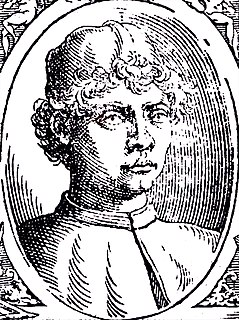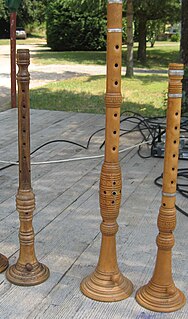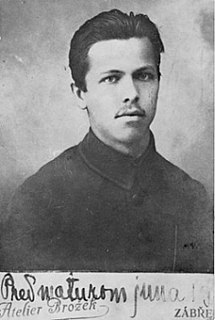
The Danse Macabre, also called the Dance of Death, is an artistic genre of allegory of the Late Middle Ages on the universality of death. The reminder of death's inevitability became a theme in art, especially after The Black Death, as death and destruction seeped into European culture. The Danse Macabre represented a deviation from traditional Medieval Catholic thought, by romanticizing death, and in some cases, humorizing it. Instead of fearing the fires of hell, the concept of death became almost too mainstream to be stigmatized so. The potent morbidity of famine, war, and plague caused a rift between the Catholic Church and the people, as their prayers went unanswered. Regardless of piety, class, power, gender, or age - people were struck down. The vulnerability, and mortality, of humanity was unavoidable. Death is, intrinsically, a collective human experience.

Istria is the largest peninsula within the Adriatic Sea. The peninsula is located at the head of the Adriatic between the Gulf of Trieste and the Kvarner Gulf. It is shared by three countries: Croatia, Slovenia, and Italy. Croatia encapsulates most of the Istrian peninsula with its Istria County.

Piero della Francesca, originally named Piero di Benedetto, was an Italian painter of the Early Renaissance. To contemporaries he was also known as a mathematician and geometer. Nowadays Piero della Francesca is chiefly appreciated for his art. His painting is characterized by its serene humanism, its use of geometric forms and perspective. His most famous work is the cycle of frescoes The History of the True Cross in the church of San Francesco in the Tuscan town of Arezzo.
The Istrian Democratic Assembly is a centre to centre-left, regionalist, liberal political party in Croatia primarily operating in Istria County.

"Istrian scale" refers both to a "unique" musical scale of folk music genres from Istria and Kvarner which use the style. It is named for the Istrian peninsula. Istrian folk music is based on a distinctive six-tone musical scale, and the peninsula's two-part, slightly nasal singing. The two-part singing and playing in the Istrian scale, a traditional singing practice characteristic of the Istrian region and the north Adriatic coastal area and islands, was inscribed in UNESCO's List of Intangible Cultural Heritage in 2009.

Giovanni Lanfranco was an Italian painter of the Baroque period.

Kastav is a town in Primorje-Gorski Kotar County, Croatia, built on a 365 m high hill overlooking the Kvarner Gulf in the northern part of the Adriatic coast. It is in close vicinity of Rijeka, the largest port in Croatia, and the Opatija Riviera, one of the popular tourist destinations in Croatia.

The sopile is an ancient traditional woodwind instrument of Croatia, similar to the oboe or shawm. It is used in the regions of Kvarner, Kastav, Vinodol, Island Krk, and Istria. Sopile are always played in pairs so there are great and small or thin and fat sopila. Sopile are musical instrument of sound very interesting possibilities and very piercing special sound. This is replicated in more modern examples of Kvarner music through use of modified double reed clarinet or soprano Dulzaina. Sopile are, by "mih" and "šurle," today very popular in folk tradition of Istria, Kvarner and Island Krk.

The Istrian–Dalmatian exodus was the post-World War II expulsion and departure of local ethnic Italians from the Yugoslav territory of Istria, Kvarner, the Julian March as well as Dalmatia. These regions were ethnically mixed, with long-established historic Croatian, Italian, and Slovene communities. After World War I, the Kingdom of Italy annexed Istria, Kvarner, the Julian March and parts of Dalmatia including the city of Zadar. At the end of World War II, under the Allies' Treaty of Peace with Italy, the former Italian territories in Istria, Kvarner, the Julian March and Dalmatia were assigned to the nation of Yugoslavia, except for the Province of Trieste. The former territories absorbed into Yugoslavia are part of present-day Croatia and Slovenia.

Francesco Traini was an Italian painter who was documented as working from 1321 to ca 1365 in Pisa and Bologna.

Mijo Mirković, also known by his pen names Miho and Mate Balota, was a prominent Croatian poet, novelist and economist. Considered one of the most prominent Croatian poets of the 20th century and often credited as the greatest Istrian poet, he was called "the greatest Istrian after Labin's Matija Vlačić" by Tone Peruško.

Bunić is a village in Lika, Croatia, located in the Udbina municipality, between Korenica and Lički Osik. The population is 133.
Croatian art describes the visual arts in Croatia, and art by Croatian artists from prehistoric times to the present. In Early Middle Ages, Croatia was an important centre for art and architecture in south eastern Europe. There were many Croatian artists during the Medieval period, and the arts flourished during the Renaissance. Later styles in Croatia included Baroque and Rococo.

Italian folk dance has been an integral part of Italian culture for centuries. Dance has been a continuous thread in Italian life from Dante through the Renaissance, the advent of the tarantella in Southern Italy, and the modern revivals of folk music and dance.

Holy Trinity Church is a historical building in Hrastovlje, a village in southwestern Slovenia. There are two hypotheses about its origin. According to the first, it is a Romanesque church from the 12th century. According to the second, it is an example of the Istrian variant of Early Venetian Renaissance architecture from the 15th century.

Istrian Italians are an ethnic group from the Adriatic region of Istria in modern northwestern Croatia and southwestern Slovenia. Istrian Italians descend from the original Latinized population of Roman Histria, from the Venetian-speaking settlers who colonized the region during the time of the Republic of Venice, and from the local South Slavic people who culturally assimilated.

The Italian irredentism in Istria was the political movement supporting the unification to Italy, during the 19th and 20th centuries, of the peninsula of Istria. It is considered closely related to the Italian irredentism in Trieste and Fiume, two cities bordering the peninsula.

The Long Hair of Death is a 1964 Italian horror film directed by Antonio Margheriti. It stars British actress Barbara Steele in the roles of Helen Rochefort and Mary, Italian actor George Ardisson as Kurt Humboldt, and Polish actress Halina Zalewska in a dual role as Adele Karnstein and her daughter Lisabeth. It is set in a 15th-century feudal castle, and the nearby village.

Paz is a village and ruined castle in Istria County, Croatia, in the municipality of Cerovlje. In 2011, the population of the village is 72.

Blessed Julian of Bale, was a Franciscan friar, who was beatified by the Catholic Church in 1910.


















